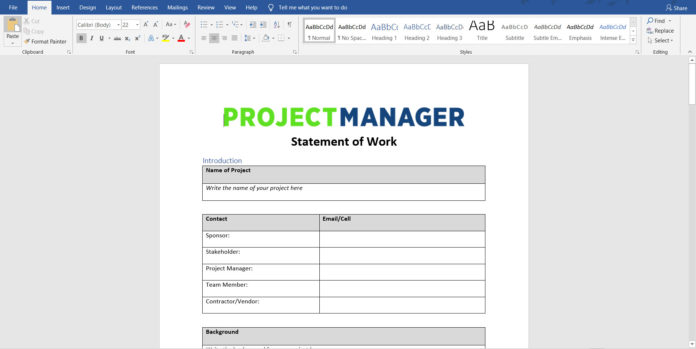Statement of Work is a document that is often used in project management employments. It is basically a bare essential portrayal of the project, the expectations, the courses of timelines and the activities one is required in order to provide types of services to the client.
What is a Statement of Work (SOW)?
An SOW should specifically detail the purpose behind the project one is working on, its scope, location, course of timelines, and foreseen deliverables.
It should also indicate places where people will be required to be during the continuation of the project (location) and any specific essentials as well as the payment mode and contract details.
Clearly, the document is an amazingly comprehensive and nitty-gritty description of the current as well as the expected future work of the project.
Statement of Work Best Practices
A particularly defined statement of work is fundamental to the success of any Procurement project. Providing explicit, measurable, and point-by-point information, it benefits as a guide for success and helps with ensuring success with partners.
The more precise and well-defined the better. Organized suitably, a SOW helps to avoid miscommunication, scope creep, and other side-effects of lacking planning. Take a look at our guide for creating a SOW with all that you need to build better vendor partnerships.
How to write a statement of work for an IT services contract
CIOs spend many dollars on professional IT services each year, with demand expected to become sharply through the following five years.
Grandview Research, which pegged the global IT professional services market at $562 billion in 2017, has foreseen a yearly growth rate of 8.4%, instigating the value of IT professional services to $1.07 trillion by 2025.
With such a great deal of money in stake, also not to mention that IT service contract deliverables, enterprise IT pioneers need to have a strong methodology for seeking for a request for proposition (RFP) and making the follow-on SOW that they’ll use to engage in with the selected vendor.
Read Also: Failed Drug Test – What It Could Mean For You?
Many IT organizations, in any case, haven’t aced how to write an RFP that will evoke the right vendors or make a statement of work that ensures they get the services they need.
Tips for Writing an Advantageous SOW
When vendors send their RFPs, and after senior authority evaluates and picks a vendor to provide required kinds of services, it is the subsequent step for IT pioneers to create the document for the SOW as continually as they’d manage any tech project.
Recommended steps for writing a suitable SOW are as follows:
Find alternative vendors to look after, so IT has a Plan B if the negotiations with the selected vendor breakdown. It’s always good to know you have a backup plan. Observing that IT departments will have more impact on negotiating the SOW if the vendor understands the client has different options.
IT pioneers should use the details around jobs, duties, price estimating and other points referenced in the RFP to draft the SOW.
Be explicit about what work the vendor will deliver and what works internal staff will perform. Be vigilant when you find in SOWs comments like “joint ownership” or “joint duties” between the vendor and the client because it’s not really well-defined and that is a formula possibly causes an issue later.
Be as specific as possible around essential requirements, metrics, accomplishments, deadlines and price estimates. Besides, establish expectations or limits on where the vendor will perform the work (in-house, off-site, on-site, or remote).
Enterprise executives should have the option to get that report and totally understand precisely what they are going to do, how they will do it, what number of people they need to do it, and what infrastructure needs to go into it. Definitely, the information in the SOW is essential to have the option to really assess whether the offer is a better than average cost and whether the expense will stay consistent for the life of the contract.
Read Also: 3 Tips to score a 10-point GPA
Make sure of who owns any tools/devices or supporting software programs developed as a significant part of your IT services contract, so IT knows that it will either have those tools and programs when the contract closes or if they leave the contract with the vendor.
Outline clear support level and staffing expectations to guarantee that neither slide during the length of the contract.
Create an organizational structure as a major part of the Statement of Work document with the objective that every one of these points can be monitored and managed.
Why is the SOW popular?
Formal social agreements will never thoroughly replace regular value-based agreements. Nor should they.
Specialists including Accenture and Deloitte anticipate that the contracting and freelancing business part will grow to represent 30% of the UK workforce in the following next few years. It’s impacting business and as more employees make a plunge and become self-employed contractual workers – and more companies search for flexibility and their expertise – SOW plans are also going to continue rising.


































